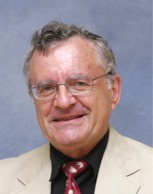 Surviving these economic times has been challenging and has created shifts and changes along with “refocusing” on core operating principles, scale of operations, business retention and financial leverage. Remapping is taking place. By that I mean that access to efficient business solutions impacting the speed of change in systems and information technology has led to new business ideas.
Surviving these economic times has been challenging and has created shifts and changes along with “refocusing” on core operating principles, scale of operations, business retention and financial leverage. Remapping is taking place. By that I mean that access to efficient business solutions impacting the speed of change in systems and information technology has led to new business ideas.
This reality does not overshadow the fact that access to the right balance of capital in the form of venture capital, private equity or line of credit requires careful consideration as our financial markets continue to seek predictability.
Postitive potential for raising capital
I was recently asked if I had thoughts about what entrepreneurs might need to consider today in the effort to raise capital. First off, I do not think the fundamentals today are much different than they have been in the past.
The ability to attract capital for a business idea or plan, whether from friends and family, angels, venture funds, private equity or debt, boils down to a combination of factors and that certainly includes the economic environment.
I believe the potential for accessing capital today is positive. However, to attract it with favorable terms depends on several tightly interrelated factors.
innovation DAILY
Here we highlight selected innovation related articles from around the world on a daily basis. These articles related to innovation and funding for innovative companies, and best practices for innovation based economic development.
Research Round Up: Small Businesses to the Rescue
June turned out to be a really big month for small business research (if I might channel Ed Sullivan for a moment), primarily because the firm size class numbers were released by the U.S. Census Bureau and the SBA Office of Advocacy.
We’ll get to that in a moment.

Learning about economic development
Given the state of the economy, it should come as no surprise that just about everybody is interested in economic development. When you reduce it to its simplest terms, you get that “jobs, jobs, jobs” that all the politicians have been yelling about. So the release of two research reports by the SBA Office of Advocacy have been particularly timely.
The Sobering Reality of Entrepreneurship in the U.S.
 Many of us harbor a somewhat romantic idea of being an entrepreneur. Yes, you work hard and possibly around the clock, but the gratification of being your own boss is something few people get at their 9-to-5 jobs. And, of course, if your business makes it big, you could rake in the millions, retire early, become an angel investor… or pursue any other of your life’s dreams. Right?
Many of us harbor a somewhat romantic idea of being an entrepreneur. Yes, you work hard and possibly around the clock, but the gratification of being your own boss is something few people get at their 9-to-5 jobs. And, of course, if your business makes it big, you could rake in the millions, retire early, become an angel investor… or pursue any other of your life’s dreams. Right?
Not necessarily. There are many common misconceptions to what we believe an entrepreneur’s life is like, how they come to be, or even where the United States stands in the world of entrepreneurship.
New mobile start-up, EverTrue, aims to help colleges stay close to young alums
 Who better than a recent business school grad to launch a new
start-up that is creating mobile apps to help universities stay
connected to their alumni?
Who better than a recent business school grad to launch a new
start-up that is creating mobile apps to help universities stay
connected to their alumni?
Brent Grinna started working on EverTrue while at Harvard Business School; he graduated last month, and around the same time, the company launched its first app, Brown Alumni Connect.
Grinna says EverTrue is focused on building "young alumni engagement tools" that will deliver news, sports scores, video, and an event calendar to alums via their iPhones (and eventually, Android phones and BlackBerries, too.)
World Cup sends shocks through Twitter, Facebook

The World Cup has been driving large numbers of status updates on Facebook and Twitter.
Twitter reached a new record in tweets-per-second (jokingly dubbed ‘TPS’ in a riff on the movie “Office Space”) during the Japan-Denmark game. The company saw 3,283 tweets sent per second, just above the record set earlier this month when the Los Angeles Lakers beat the Boston Celtics to win the NBA championship.
The Life of an Entrepreneur
 There are some qualities that successful entrepreneur possess. People perceive them to be lucky but if you ask them, then you know the answer is not being lucky. It is about being optimistic along other qualities.
There are some qualities that successful entrepreneur possess. People perceive them to be lucky but if you ask them, then you know the answer is not being lucky. It is about being optimistic along other qualities.
Have you ever wondered how the life of a successful entrepreneur is like? What is your first thought when you meet one? I mean the one who owns many businesses. Probably you conclude that he is lucky. We always admire them and have that appealing of being like them. Frankly, coming up with a unique business idea in this saturated markets under the sun isn’t easy.
Being a successful entrepreneur is not about luck… no, it’s neither about you being fed up with your current job and seeing that entrepreneurship is the way forward. But it’s all about people who have made up their mind and are passionate about becoming successful in business.
If the new business fails, they never quit. Instead, they take a break in order to review the whole idea. They discover where they went wrong. They do the necessary modifications and adjustments. They are there to make it happen.
Delaware Governor Calls for National Commitment to Building Jobs in an Innovation Economy
 (Wilmington, DE) Delaware
Governor Jack Markell joined Former House Majority Leader Dick Gephardt
at Delaware Technical and Community College in a call to promote
medical innovation as a means of creating jobs and finding cures.
Research prepared by The Battelle Technology Partnership Practice for
the Council for American Medical Innovation (CAMI) shows that the U.S.
is losing ground as a leader in medical innovation, an area that
generates high-quality jobs and if properly fostered, could generate
more.
(Wilmington, DE) Delaware
Governor Jack Markell joined Former House Majority Leader Dick Gephardt
at Delaware Technical and Community College in a call to promote
medical innovation as a means of creating jobs and finding cures.
Research prepared by The Battelle Technology Partnership Practice for
the Council for American Medical Innovation (CAMI) shows that the U.S.
is losing ground as a leader in medical innovation, an area that
generates high-quality jobs and if properly fostered, could generate
more.
“It is critical to our national and economic
interest that we own medical innovation in the future as thoroughly as
we owned mechanical innovation in the past. We need continued
leadership in promoting critical bio-medical industries in order to
secure the jobs of the future. We’re talking about unleashing the
American spirit of enterprise and our entrepreneurial energy to tackle
not just the next great economic opportunity but the next great medical
discovery,” said Governor Markell. “Delaware has a well-earned
reputation as a cradle of innovation.”
Bills aim to give small businesses more capital - Phoenix Business Journal
 WASHINGTON -- The House passed two bills that would provide community banks with cheap capital to increase lending to small businesses and give investors a tax break for purchasing stock in small corporations.
WASHINGTON -- The House passed two bills that would provide community banks with cheap capital to increase lending to small businesses and give investors a tax break for purchasing stock in small corporations.
The two bills, however, face an uncertain future in the increasingly cost-conscious Senate.
The Small Business Jobs and Credit Act, which the House passed June 17 on a 241-182 vote, would create a $30 billion fund that banks with less than $10 billion in assets could tap. The bill includes incentives for banks to use this money to increase lending to small businesses; the more loans they make to small firms, the lower the dividend rate they would pay the government for this capital. Banks also would have to submit a plan on how they would use the capital to increase small-business lending.
Psychiatrist Says Alcohol Suppresses Creativity
 According to a psychiatrist, the thought that artists are inspired by drugs and alcohol to create magnificent work of art, is a dangerous myth. The reason behind it is that they suppress creativity, rather than boosting it.
According to a psychiatrist, the thought that artists are inspired by drugs and alcohol to create magnificent work of art, is a dangerous myth. The reason behind it is that they suppress creativity, rather than boosting it.
Consultant in Addiction Psychiatry at Gartnavel Royal Hospital in Glasgow, Iain Smith, is of the view that many artists, who were renowned for their use of such substances, produced their greatest works, when they under the effect of alcohol.
Smith revealed that the myth owes its popularity to the appeal of these intoxicating substances. The myth is also powerful because many artistes require drugs to handle their emotions. He also disclosed that artists are highly emotional and therefore, use of these substances to cope up with their emotions is expected to happen.
The man behind the MaRS mission
 A colleague catches Dr. Rafi Hofstein on the way into his office and outlines a project snag. Dr. Hofstein, the chief executive officer of MaRS Innovation, a new entity charged with turning Toronto scientists’ ideas into products and profits, is annoyed – both by the interruption and the colleague’s insistence the problem will cause delays. “We have to sign today,” Dr. Hofstein says tersely, already halfway into his office, “so make sure we sign on something that’s agreeable to us.” The door shuts.
A colleague catches Dr. Rafi Hofstein on the way into his office and outlines a project snag. Dr. Hofstein, the chief executive officer of MaRS Innovation, a new entity charged with turning Toronto scientists’ ideas into products and profits, is annoyed – both by the interruption and the colleague’s insistence the problem will cause delays. “We have to sign today,” Dr. Hofstein says tersely, already halfway into his office, “so make sure we sign on something that’s agreeable to us.” The door shuts.
Dr. Hofstein has no time for internal diplomacy. He’s here to get things done the entrepreneurial way: shrewdly, creatively and as quickly as possible. He’s been given five years to turn the vast scientific talent clustered around University Avenue into the seeds of a vibrant biotechnology industry. And he’s doing it while answering to 14 research institutions and three levels of government. The job, says a close observer, requires an “arch-politician” – but one who invests in ego-stroking only when it’s necessary.
His challenge is huge, but so is the opportunity. Ontario, and especially Toronto, is home to North America’s third-largest medical cluster, exceeded only by San Diego and Boston. Starting with the discovery of insulin in 1922 and on through breakthroughs in genomics, stem cells and breast cancer, the city has emerged as a global leader in regenerative medicine, oncology and medical device technology. The 2.5 square kilometres centred around the University of Toronto and the downtown hospitals, dubbed the Discovery District, may be the most concentrated area of medical research in the world, says Matt Buist, biotech manager for Toronto Economic Development, who branded the area in the mid-1990s as part of an effort to attract investment.
The West Coast Corridor: 1400 miles of innovation on top of a fault line...
 California has by far the largest number of tech workers. According to TechAmerica Foundation’s Cyberstates 2010 report, it has 993,000 tech workers, and its largest center is Silicon Valley.
California has by far the largest number of tech workers. According to TechAmerica Foundation’s Cyberstates 2010 report, it has 993,000 tech workers, and its largest center is Silicon Valley.
But it’s not just Silicon Valley that impresses me. If you fly north along the West Coast starting at San Diego, take a look at what you’ll be flying over:
- San Diego, with its large communications, biotechnology and pharmaceutical companies. This is where Qualcomm is based, the world leader in mobile communications technologies.
- Orange County has a very large number of electronics companies. This is where Broadcom, one of the largest chip companies is based.
Young World Rising: How Youth Technology and Entrepreneurship are Changing the World from the Bottom Up (Microsoft Executive Leadership Series)
 Title: Young World Rising: How Youth Technology and Entrepreneurship are Changing the World from the Bottom Up (Microsoft Executive Leadership Series)
Title: Young World Rising: How Youth Technology and Entrepreneurship are Changing the World from the Bottom Up (Microsoft Executive Leadership Series)
Authors: Rob Salkowitz
Description
Young World Rising gives you an exclusive glimpse into the new trend that’s transforming global business and changing the dynamics of globalization
The global Millennial generation is 4.1 billion strong, and the spread of data networks is empowering them to build radically new kinds of organizations adapted to a flat and crowded world. Young World Rising takes you on a panoramic tour of the new centers of enterpreneurial innovation on five continents.
See, Think, Wonder: What Innovators Can Learn from Kindergarten
 Innovation Blog
Innovation Blog
See, Think, Wonder: What Innovators Can Learn from Kindergarten
By Shlomo Maital
My grand-daughter Agam is six years old, and is finishing kindergarten; she will begin Grade One in the Fall.
Agam’s kindergarten is first-rate. One of the things she learned there (in addition to reading!) is an exercise known as See Think Wonder. A variation of it is Feel Think Wonder.
Here is how it works:
1. See. REALLY LOOK at something. Mostly, we look at things, but we do not see them. REALLY see them. In every detail. Practice SEEING! See things we miss normally, out of haste. Have you really seen your eyebrows lately? What did you miss?
2. Think. Think about what you see. Reflect on it. Ponder, analyze, compare, contrast, examine.
3. And most important: WONDER! That is, imagine and dream. What if it were different? What if it were impossibly amazing? What if I looked at myself in the mirror, and became 6 feet 6 inches tall? WONDER — leading to action!
Hollowing Out the Middle; A Call to Duty to Save Small Town America
 I have moved around the United States over the past few years, and
whenever I mention my hometown Gary, Indiana, two things come up no
matter what: The Jackson family and the economic downturn of the steel
industry of the 70s and 80s that also impacted the city of Gary. So
imagine my feelings after hearing about Hollowing
Out The Middle. Written by sociologists Patrick
Carr and Maria Kefalas, the book examines how the plight of
maintaining economic viability in small towns is too often overlooked. Given
the economic uncertainty of the country, the book’s appearance is
timely.
I have moved around the United States over the past few years, and
whenever I mention my hometown Gary, Indiana, two things come up no
matter what: The Jackson family and the economic downturn of the steel
industry of the 70s and 80s that also impacted the city of Gary. So
imagine my feelings after hearing about Hollowing
Out The Middle. Written by sociologists Patrick
Carr and Maria Kefalas, the book examines how the plight of
maintaining economic viability in small towns is too often overlooked. Given
the economic uncertainty of the country, the book’s appearance is
timely.
Who Stays Home, Who Goes Away
Hollowing Out The Middle focuses on the interviews of the young residents of “Ellis”, Iowa, a small town with a population of 2,000 and “eighty miles from the nearest Starbucks”. Carr and Kefalas moved to Iowa to understand the migration motives; they note that “only West Virginia loses a larger percentage of college graduates to out-migration.” The authors divided their interviewed subjects into four separate groups;
- Stayers, those who feel their lives are best served staying in their town
- Achievers, those who leave for large cities and educational opportunities
- Seekers, those who join the military, unable to afford college
- Returners or “Boomerangs”, those who leave for large cities and later return, rejecting the lifestyle selected for personal reasons
UNH, Seacoast entrepreneurs invest in Pease facility for startups
PORTSMOUTH – Some firms aim to serve as incubators for up-and-coming companies. The New Hampshire Innovation Commercialization Center wants to be an accelerator.
The collaboration between the University of New Hampshire and local entrepreneurs focuses on the field of technology. Those involved hope the initiative will nurture promising start-up companies, support innovation and create jobs.
On Wednesday, managing director Mark Galvin – who has had a hand in starting four companies, including Whaleback Systems – gave a tour of the new facility on Rochester Avenue in the Pease Tradeport to UNH President Mark Huddleston and the media. Galvin showed off a converted space in the 15,000-square-foot building, where he hopes New Hampshire’s future success stories will begin.
Companies that come in will be given seed funding, access to resources from the university and the local business community, and guidance by in-house entrepreneurs who have experience with start-ups. They’ll have six to 18 months to grow into a company that can stand on its own, buoyed by staff expertise at the center and some $100,000 to $250,000 in startup funds.
The G-20's New Balance of Power
 As world leaders gather in Canada this weekend, the nations with
the most influence won't be the high-tech mavens. Joel Kotkin on why
traditional industries still matter in the post-information age.
As world leaders gather in Canada this weekend, the nations with
the most influence won't be the high-tech mavens. Joel Kotkin on why
traditional industries still matter in the post-information age.
Are we entering the post-information age?
For much of the last quarter century, conventional wisdom from some of the best minds of our times, like Daniel Bell, Alvin Toffler and Taichi Sakaiya—in both East and West—predicted that power would shift to those countries that dominate the so-called information age. At the time, this was the right call, but it may increasingly be, if you will, old news. Although there’s no question that iPhones and 3-D movies are nifty—and hedge funds generators of massive wealth for investors and operators—we now may actually be entering what might be called the post-information age.
As the ministers gather in Toronto this weekend for the G-20, we can see how overblown the efficacy of a virtual economy might be. The current star players on the field in terms of economic growth and fiscal strength generally derive their power not from information technology, media, or financial savvy but by the mundane but still important basic underpinnings of economic growth: agriculture, manufacturing and energy production.
Venture Capital – Second Road.
 Although the concept of venture capital has been around for well over two hundred years, it is only really in the last twenty or thirty years that companies have specifically sought to boost entrepreneurialism and profit through the development and growth of successful businesses. Many of the venture capital companies trading today were initiated in the eighties or nineties.
Although the concept of venture capital has been around for well over two hundred years, it is only really in the last twenty or thirty years that companies have specifically sought to boost entrepreneurialism and profit through the development and growth of successful businesses. Many of the venture capital companies trading today were initiated in the eighties or nineties.
Although this idea has proven to be popular and successful for both investors and for those struggling to take their business to the next level, there is widespread concern amongst new entrepreneurs or would be business owners that the current economical climate and general concern with the future economic outlook is liable to put off many would be investors. The concern is that venture capital investors are likely to be less interested in business, especially those with a higher degree of risk attached.
It is argued by many that for this reason it is not advisable to look to develop or found a new business because obtaining financial backing is likely to be almost impossible, stalling the company and preventing you from taking advantage of the markets you perceive to be available.
Do You Have What It Takes To Be An Entrepreneur?
 Do you have what it takes to be an
entrepreneur, takes risks, start your own business and fulfill your
dreams of financial independence and be your own boss?
Do you have what it takes to be an
entrepreneur, takes risks, start your own business and fulfill your
dreams of financial independence and be your own boss?
What is an entrepreneur? Well, the word itself came from late 19th century France as “entreprendre”, which means “somebody who undertakes”.
So, an entrepreneur is one who takes risks, or as Encarta defines it, a risk-taking businessperson, somebody who initiates or finances new commercial enterprises.
The Idea Incubator Goes to Campus
T uesday, he expects to lock up $1.5 million in funding for his new
start-up, Lantos Technologies. The company has
developed a 3-D scanner that it hopes will streamline the current
generation of earphones and hearing aids by precisely fitting them to
the dimensions of the ear canal, right up to the eardrum.
uesday, he expects to lock up $1.5 million in funding for his new
start-up, Lantos Technologies. The company has
developed a 3-D scanner that it hopes will streamline the current
generation of earphones and hearing aids by precisely fitting them to
the dimensions of the ear canal, right up to the eardrum.
"We're hoping people will be able to walk in the store and have their ears scanned like people get their ears pierced today," he says. "That'll lower the cost because they don't have to go to a specialty doctor."
Unlike other academics often left to their own devices, Professor Hart was able to bring his hearing aid concept closer to reality with $50,000 in backing last year from the Deshpande Center for Technological Innovation, an M.I.T. entity originally funded by two private investors, Jaishree Deshpande and her husband, Gururaj.
"I wouldn't have known the first thing about doing all of this," says Professor Hart. "The people from the Deshpande Center led me through."
Feeling the Cluster Funk?
 I recently attended another one of those economic development summits where a bunch of people with long titles gets a chance to speak on a panel touting the mysterious benefits of a mysterious innovation clusters that create mysterious wealth that can only be realized if their mysterious department is funded.
I recently attended another one of those economic development summits where a bunch of people with long titles gets a chance to speak on a panel touting the mysterious benefits of a mysterious innovation clusters that create mysterious wealth that can only be realized if their mysterious department is funded.
Nearly every speaker concluded with the following paraphrase: “if only government would fund this or that, everything will be fine”, or, “if only corporations would fund this or that, then we’ll all be better off”
Uhmmm…sorry to break the news, it ain’t gunna happen.

